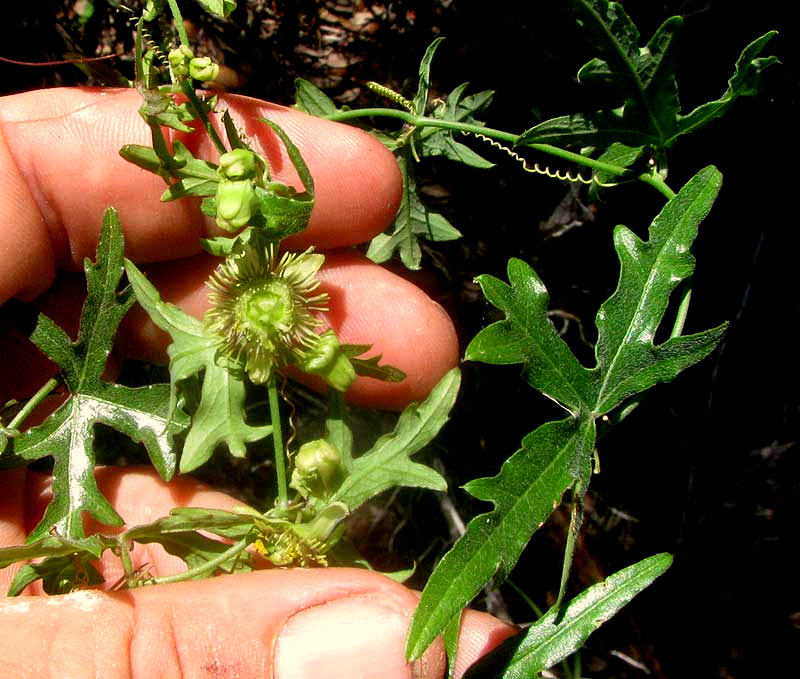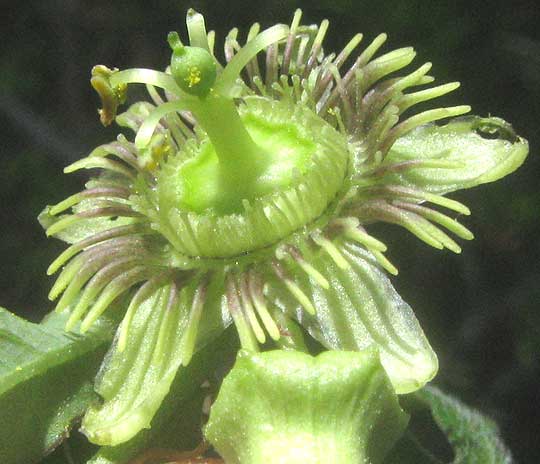Excerpts from Jim Conrad's
Naturalist Newsletter

from the August 4, 2013 Newsletter issued from the Frio Canyon Nature Education Center in the valley of the Dry Frio River in northern Uvalde County, southwestern Texas, on the southern border of the Edwards Plateau; elevation ~1750m (~5750 ft); N29.62°, W99.86°; USA
PASSIONFLOWER
In Mexico we found unexpected diversity among passionflower vines -- many species different from one another in sometimes subtle ways, yet always a delight to meet, for the passionflower blossom is unusual and pretty. And what a pleasure this week when I went to fetch a gravel sifter leaned against a tree just last week, to find that a passionflower vine had grown onto it in such a short period of time. Above ,you can see part of the vine bearing flowers, coiling tendrils and very wide but short leaves, so typical of passionflower vines.
The most famous passionflowers produce large, gaudy, almost surreal blossoms, but our picture shows what's more typical of the passionflower genus in general, which is small, greenish flowers that demonstrate the passionflower's distinctive anatomy only if you look closely. A close-up of a half-inch broad (13mm) flower is shown below:

The broad, greenish, petal-like items radiating from the blossom's center are calyx lobes, or sepals, doing the service of petals, for in this species no corolla is produced. The two series of many slender, fingerlike things often are referred to as the corona, or crown, and I can't think of any other kind of flower producing such a structure. However, such "fringed" crowns are typical among the passionflowers. In the flower's center the trunk-like stalk, or gynophore, bears the male and female parts atop it. The five out-curving items are stamens, only one of which -- the one at the far left -- bears an anther, for something has eaten off the other four anthers. In fact, nestled between the stamens' bases is the green, oval ovary, the future fruit, and something has eaten off the oversized, stigma-bearing styles atop it, which normally as are conspicuous as the stamens.
This is PASSIFLORA TENUILOBA, because of the shape of its leaves usually called the Birdwing Passionflower. Specializing in open limestone areas and dry caliche soils, it occurs mostly in northern Mexico, southwestern Texas and a bit of southern New Mexico.
Elsewhere we've often commented on the variety of butterflies whose caterpillars eat passionflower vines. One of our most common butterfly species here, the Gulf Fritillary, belongs to that passionflower-vine-eating group, and I'll bet that a Gulf Fritillary caterpillar ate our flower's stigmas and styles.